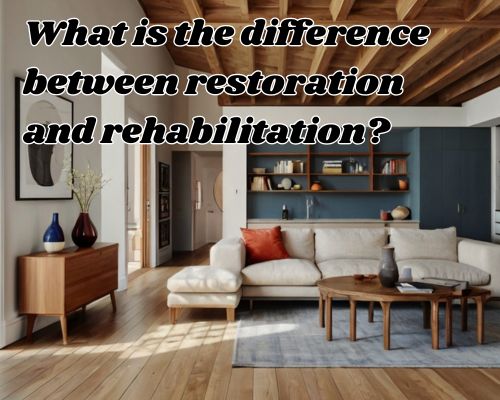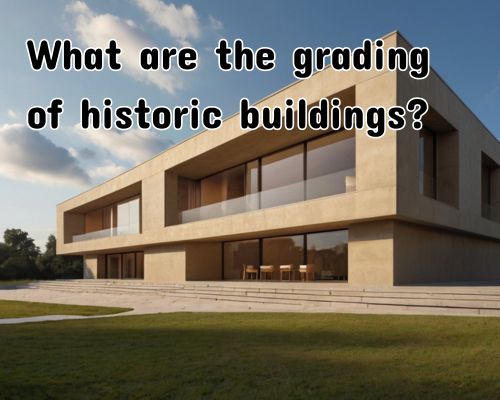What is the Difference Between Restoration and Rehabilitation?
What is the Difference Between Restoration and Rehabilitation?
Restoration and rehabilitation are two commonly used terms in environmental conservation, historical preservation, and even healthcare. While they are often used interchangeably, they have distinct meanings and applications. Whether you are considering an ecological project in Mornington, Australia, or researching structural restorations for historical buildings, understanding the differences between restoration and rehabilitation is essential. Let’s get on to these with Mornington Cabinet Makers.

Understanding Restoration
Restoration refers to the process of returning something to its original state or condition. This term is widely used in construction, environmental conservation, and heritage preservation. Restoration aims to recreate the past by eliminating modern alterations and restoring the original elements.
Key Aspects of Restoration:
- Historical Accuracy: In heritage preservation, restoration focuses on reviving structures to their original form, often using period-appropriate materials and techniques.
- Environmental Restoration: This involves rehabilitating ecosystems to their pre-disturbance conditions, such as wetland restoration or bushland regeneration in the Mornington Peninsula.
- Structural Integrity: In architecture, restoration repairs damaged components without altering the fundamental structure.
Examples of Restoration in Mornington, Australia:
- Heritage Buildings: Mornington has several historical landmarks, such as the Mechanics’ Institute and Mornington Courthouse, which undergo restoration projects to preserve their original 19th-century charm.
- Coastal Restoration: With its stunning beaches, Mornington has been part of conservation efforts to restore dune systems and prevent coastal erosion.
- Wildlife Conservation: Projects aimed at restoring habitats for native species like the endangered Eastern Barred Bandicoot are common in Victoria’s conservation initiatives.
Understanding Rehabilitation
Rehabilitation, on the other hand, refers to the process of improving and modifying a structure, ecosystem, or individual to function optimally. Unlike restoration, rehabilitation does not strictly focus on maintaining historical accuracy but instead emphasizes functionality and modernization.
Key Aspects of Rehabilitation:
- Improvement & Adaptation: While restoration aims for authenticity, rehabilitation allows modifications that enhance usability.
- Ecological Rehabilitation: In environmental contexts, rehabilitation involves reviving ecosystems with sustainable interventions rather than fully reverting them to their original state.
- Medical & Social Rehabilitation: This term is widely used in healthcare, referring to physical, occupational, or mental health programs that help individuals regain function and independence.
Examples of Rehabilitation in Mornington, Australia:
- Building Rehabilitation: Many older properties in Mornington undergo rehabilitation, such as upgrading plumbing and electrical systems while maintaining the architectural essence.
- Parklands & Wetlands: Rehabilitation projects focus on improving the condition of places like the Mornington Peninsula National Park to ensure they remain viable for future generations.
- Community & Health Rehabilitation: Facilities like Peninsula Health offer rehabilitation services, helping individuals recover from injuries and medical conditions through specialized treatments.
Restoration vs. Rehabilitation: Key Differences
| Aspect | Restoration | Rehabilitation |
|---|---|---|
| Purpose | Return to original state | Improve function and usability |
| Changes Allowed | Minimal, must match historical/previous conditions | Can include modern upgrades or alterations |
| Approach | Uses original materials and techniques | Incorporates sustainable or functional modifications |
| Example in Mornington | Restoring heritage buildings to their original look | Upgrading older structures while preserving their character |
Why These Concepts Matter in Mornington
Mornington, Australia, is home to rich natural landscapes and historic sites, making both restoration and rehabilitation crucial for sustainable development. Whether it’s preserving the charm of the Mornington Peninsula’s coastal heritage or ensuring that national parks thrive, understanding these approaches helps residents and businesses make informed decisions.
For instance, a property owner restoring a century-old cottage may opt for restoration to maintain authenticity. Conversely, a modern homeowner in Mornington’s suburban areas may choose rehabilitation to enhance energy efficiency and accessibility while preserving certain historical elements.
Similarly, environmental projects in the region often balance both restoration and rehabilitation. The local government and environmental groups actively work on rehabilitation initiatives to improve biodiversity while implementing restoration efforts in particularly degraded habitats.
For more, visit https://morningtoncabinetmakers.com.au/.
The Role of Government and Community Initiatives
In Mornington, various community groups and government agencies play a role in restoration and rehabilitation efforts:
- Mornington Peninsula Shire: Oversees conservation programs, urban renewal, and public infrastructure projects.
- Heritage Victoria: Supports and funds historical restoration projects to maintain the cultural integrity of Mornington’s historical sites.
- Mornington Peninsula Landcare Network: Works on environmental rehabilitation, focusing on bushland restoration and land conservation.
- Local Builders & Architects: Many construction professionals in Mornington specialize in both heritage restoration and contemporary rehabilitation projects.
Making the Right Choice for Your Project
If you’re considering a property renovation, environmental conservation, or any project that requires a decision between restoration and rehabilitation in Mornington, ask yourself:
- Do I want to preserve historical integrity, or do I need modern functionality?
- Is full restoration feasible, or would rehabilitation provide better long-term benefits?
- What are the local regulations and guidelines for heritage buildings or conservation projects?
For example, if you own an old Victorian-style home in Mornington, restoration may be necessary to comply with heritage preservation laws. However, if you’re looking to improve an outdated property while maintaining its original character, rehabilitation might be the best solution.
Conclusion
Restoration and rehabilitation are both valuable approaches that serve different purposes. Restoration aims to bring structures, ecosystems, or even individuals back to their original state, preserving history and authenticity. Rehabilitation, on the other hand, focuses on improving functionality and adapting to modern needs. In Mornington, Australia, both methods are instrumental in maintaining the region’s historical charm, environmental integrity, and quality of life.
Whether you are a homeowner, a conservationist, or an investor, understanding these differences will help you make the right decisions for your projects. With ongoing efforts in heritage conservation and environmental sustainability, Mornington remains a perfect example of how restoration and rehabilitation can work hand in hand to create a vibrant and well-preserved community.
